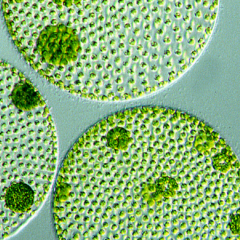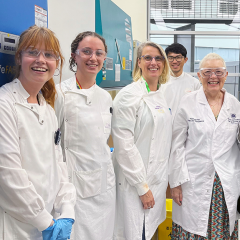A study by researchers from The University of Queensland's Institute for Molecular Bioscience (IMB) and the Queensland Institute of Medical Research is the first to prove conclusively that there is no single gene for eye colour.
Instead, it found that several genes determine the colour of an individual's eyes, although some have more influence than others.
“Each individual has two versions of a gene, inheriting one from each parent, and these versions can be the same as each other or different,” Dr Rick Sturm, the IMB researcher who led the study, said.
“It used to be thought that eye colour was what we call a simple Mendelian recessive trait - in other words, brown eye colour was dominant over blue, so a person with two brown versions of the gene or a brown and a blue would have brown eyes, and only two blues with no brown could produce blue eyes.
“But the model of eye colour inheritance using a single gene is insufficient to explain the range of eye colours that appear in humans. We believe instead that there are two major genes - one that controls for brown or blue, and one that controls for green or hazel - and others that modify this trait.
“So contrary to what used to be thought, it is possible for two blue-eyed parents to have a brown-eyed child, although this is not common.”
Dr Sturm likens the system to a light bulb.
“The mechanism that determines whether an eye is brown or blue is like switching on a light, whereas an eye becoming green or hazel is more like someone unscrewing the light bulb and putting in a different one.”
The study was carried out to clarify the role of the OCA2 gene in the inheritance of eye colour and other pigmentary traits associated with skin cancer risk in white populations, and examined nearly 4000 adolescent twins, their siblings and their parents over five years.
The findings are published in this month's edition of the American Journal of Human Genetics, and were supported with grants from Australia's National Health and Medical Research Council and the United States of America's National Cancer Institute.
The eyes have it on multiple gene question
20 Feb 2007



